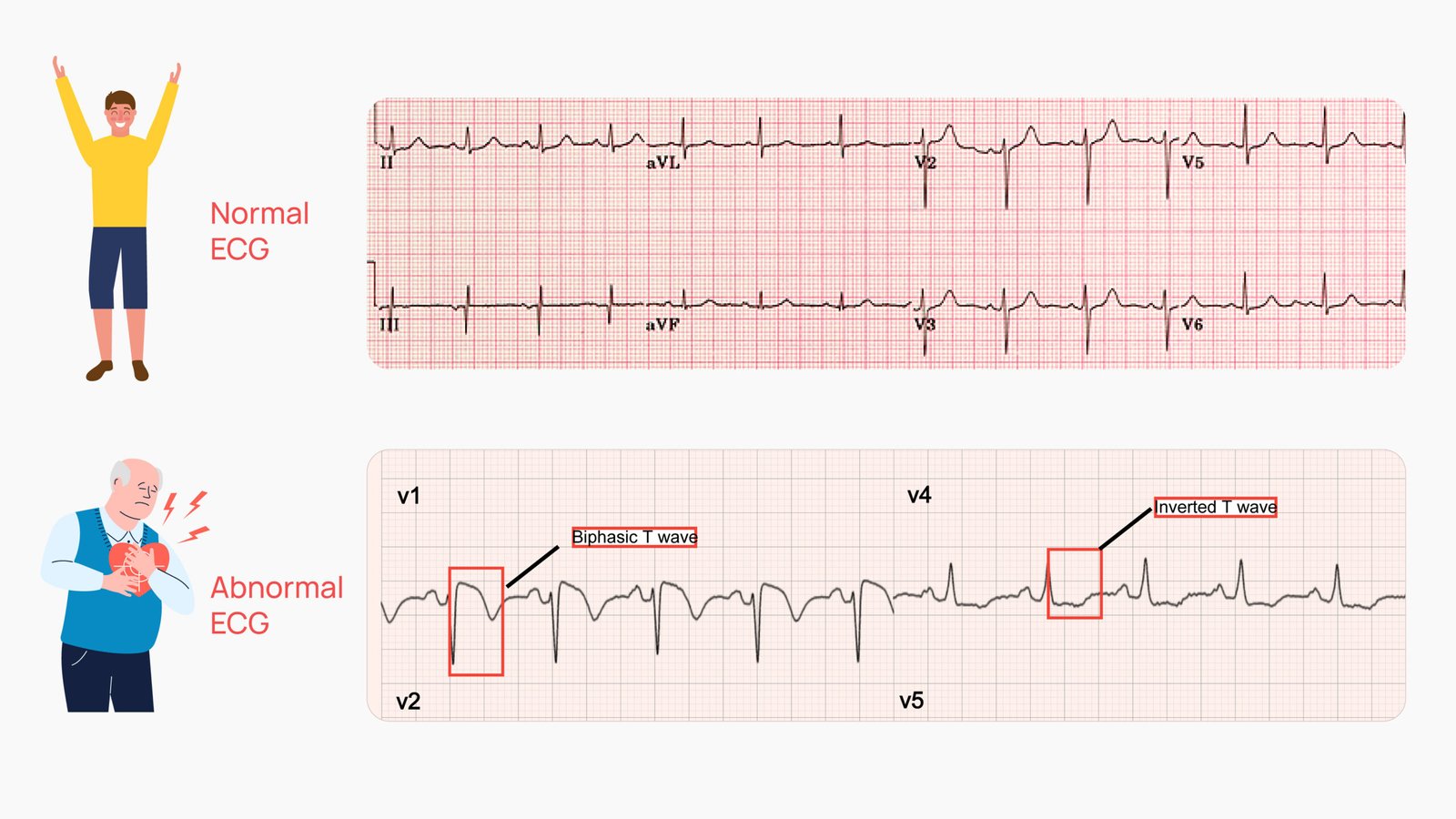
What does Normal ECG and Abnormal ECG mean?
Royson Dsouza
What is an ECG:
The heart is controlled by an electrical system just like that at your home. This electrical system ensures that the heart beats at an adequate rate and strength in order to pump out blood to the entire body. These electrical signals can be monitored with electrodes placed on the surface of one’s body which is nothing but Electrocardiogram or ECG. An ECG is generally seen on a monitor connected to the patient or printed on a paper and looks like a wavy graph. Each of those waves represent the functioning of each part of the heart thereby helping a doctor determine the status of the heart.
Normal ECG:
A normal ECG is seen as the regular pattern of the waves with adequate amplitude and time interval. This means that your heart is beating at an even rate between 60 to 100 beats per minute. Although an ECG is fairly accurate at diagnosing various heart conditions, it may not always pick up every heart disease. In such cases, confirmation can be done using other adjuncts like Echocardiogram, Blood tests which indicate heart attack like troponin levels, and coronary angiogram.
Abnormal ECG:
A variety of conditions can show up on an ECG. These include an abnormally slow or a fast beating heart, abnormal heart rhythm, structural defect in the heart (which can be congenital or acquired), disease affecting the blood supply to the heart (also called coronary artery disease), or extrinsic causes leading to poor pumping of the heart (like blocks in the major blood vessels, compression by the lung or fluid around the heart). Abnormal ECG is also seen in someone who has had a heart attack in the past.
Does an abnormal ECG always mean heart problem?
Just as normal ECG does not always mean that the heart is functioning perfectly, abnormal ECG does not always mean that the heart is defective. A person without any symptoms of heart diseases does not need to undergo an ECG. The common indications for performing an ECG for such persons include family history of heart diseases, abnormal cholesterol levels, increased blood pressure, diabetes and age more than 40 years.
Difference between Normal ECG and Abnormal ECG:
ECG consists of five waves- P, Q, R, S, and T. In a normal ECG, there are three positive waves- P, R and T, and two negative waves- Q and S. The interval between the ‘R’ waves represents each heartbeat and has to be constant. Similarly, the interval between the P wave and the R wave represents the conduction of the electrical impulse in the heart and has to be regular.
The description of these waves is specific and any changes in either the amplitude or rhythm will denote a heart problem. The commonest abnormality in an ECG is in the ST segment which is associated with heart attack. If the segment between the S wave and the T wave is elevated, it is representative of a heart attack. In a few cases however, there may be a depression in the ST segment. Following articles in this series will deal with a detailed explanation of each wave and its abnormality.



